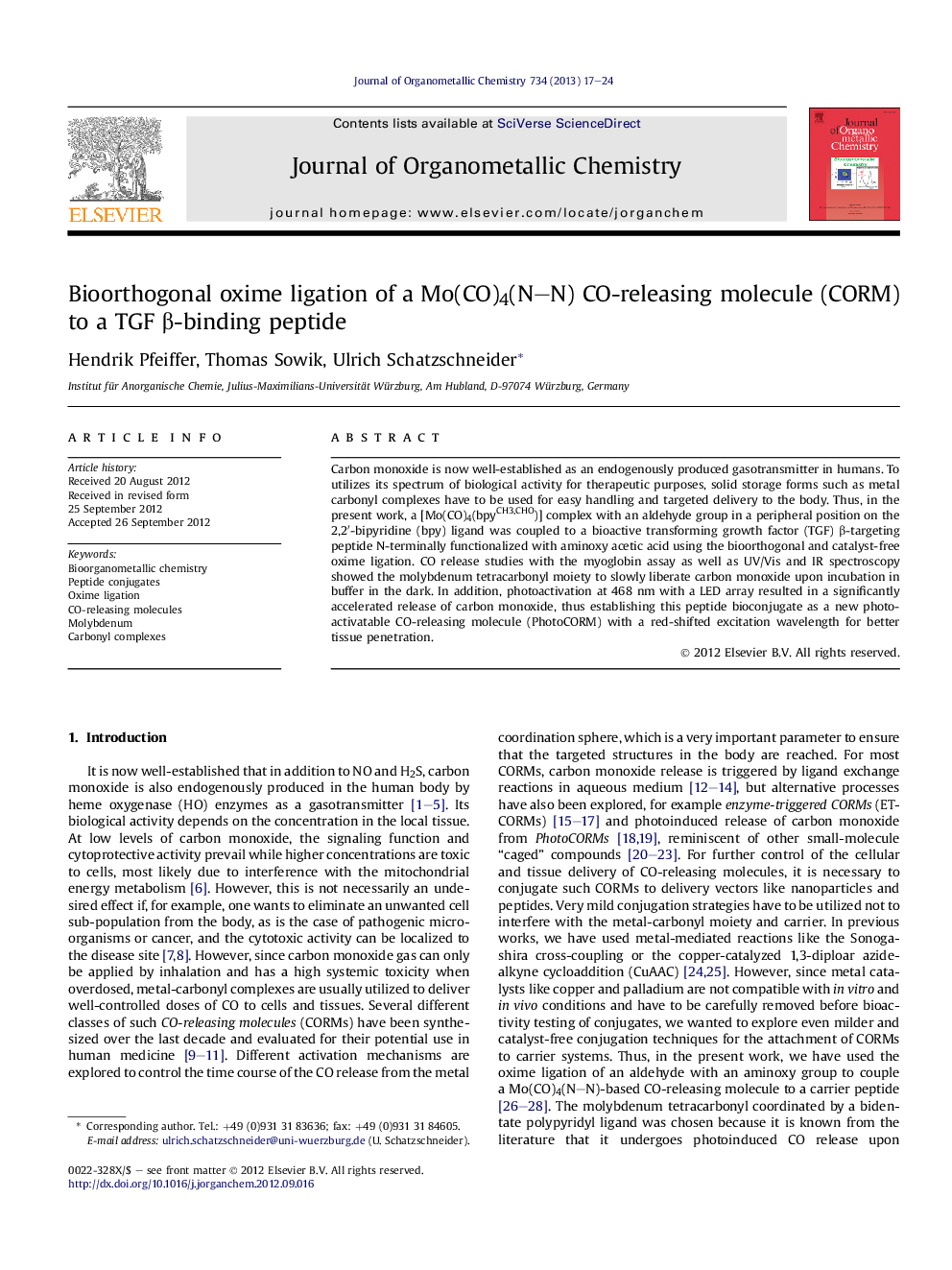| Article ID | Journal | Published Year | Pages | File Type |
|---|---|---|---|---|
| 1321814 | Journal of Organometallic Chemistry | 2013 | 8 Pages |
Carbon monoxide is now well-established as an endogenously produced gasotransmitter in humans. To utilizes its spectrum of biological activity for therapeutic purposes, solid storage forms such as metal carbonyl complexes have to be used for easy handling and targeted delivery to the body. Thus, in the present work, a [Mo(CO)4(bpyCH3,CHO)] complex with an aldehyde group in a peripheral position on the 2,2′-bipyridine (bpy) ligand was coupled to a bioactive transforming growth factor (TGF) β-targeting peptide N-terminally functionalized with aminoxy acetic acid using the bioorthogonal and catalyst-free oxime ligation. CO release studies with the myoglobin assay as well as UV/Vis and IR spectroscopy showed the molybdenum tetracarbonyl moiety to slowly liberate carbon monoxide upon incubation in buffer in the dark. In addition, photoactivation at 468 nm with a LED array resulted in a significantly accelerated release of carbon monoxide, thus establishing this peptide bioconjugate as a new photoactivatable CO-releasing molecule (PhotoCORM) with a red-shifted excitation wavelength for better tissue penetration.
Graphical abstractThe molybdenum carbonyl complex [Mo(CO)4(bpyCH3,CHO)] was conjugated to a TGF β-binding peptide by the bioorthogonal catalyst-free oxime ligation and demonstrated to act as a photoactivatable CO-releasing molecule (PhotoCORM) under 468 nm LED irradiation.Figure optionsDownload full-size imageDownload as PowerPoint slideHighlights► Bioorthogonal catalyst-free oxime ligation used to couple metal complex to peptide. ► [Mo(CO)4(bpy)] moiety releases carbon monoxide in the dark and upon irradiation. ► New PhotoCORM established with 468 nm excitation wavelength. ► CO-release studied with myoglobin assay, UV/Vis and IR spectroscopy.
